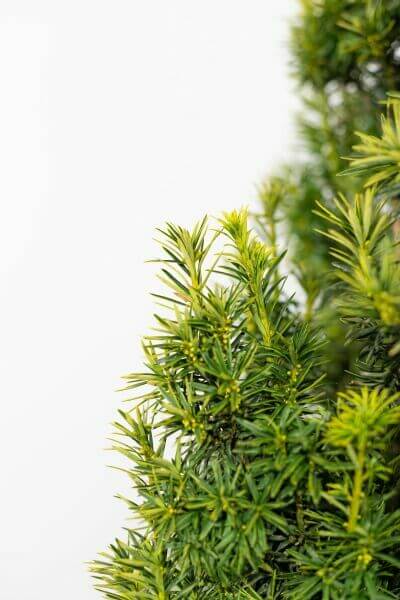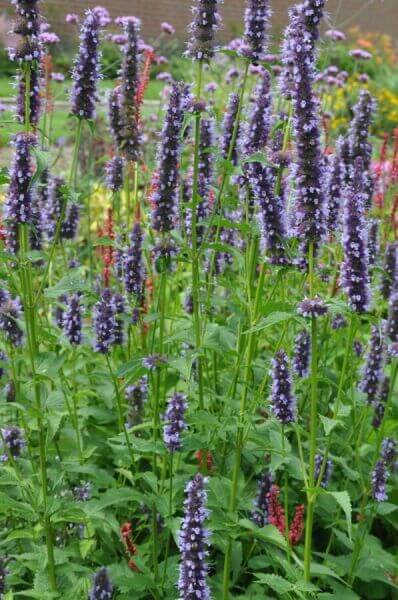Hedge Plants For Noise Reduction
Hedge Plants For Noise Reduction
Blog Article
Best Hedging Plants For Themed Gardens
Enhance your garden's allure with lavish hedge varieties such as Yew (Taxus), Thuja, Laurel, Photinia, and Bamboo, commemorated for their structural integrity and ecological advantages.
Yew and Thuja provide evergreen protection and winter season durability, while Laurel uses rapid development and broad, fragrant leaves.
Photinia includes seasonal beauty with its vibrant red foliage, and Bamboo provides a low-maintenance, peaceful atmosphere.
These hedges enhance air quality, decrease sound, and create tranquil, private areas.
Proper planting, spacing, and upkeep make sure vigorous growth and eco-friendly consistency.
Explore how these rich ranges can raise your garden's appeal and well-being.
Key Takeaways
Change Your Garden With Lush Hedge Ranges
- Select Yew for its thick, evergreen development and unrivaled durability.
- Go with Laurel for its fast growth and broad leaves, guaranteeing fast personal privacy.
- Pick Photinia for its vibrant seasonal foliage, which turns a striking dark red.
- Utilize Bamboo for a low-maintenance, winter-hardy hedge with aesthetic appeal.
- Space plants 2-3 per meter and prune routinely for ideal growth and health.
Popular Hedge Plants
When changing a garden with rich hedge ranges, it's vital to consider popular hedge plants such as Yew, Thuja, Laurel, and Photinia due to their distinct qualities and benefits.
Yew (Taxus) is highly esteemed for its longevity and dense, green growth, making it a prime choice for sustaining landscapes.
Thuja is kept in mind for its evergreen foliage and robust winter resilience.
Photinia includes seasonal vibrancy with red leaves that darken over time, creating vibrant visual appeal.
Laurel uses quick development and fragrant, broad leaves, ideal for quick privacy.
Additionally, Bamboo is an excellent choice for ambiance, offering a low-maintenance, winter-hardy option that enhances the garden's aesthetic with its sophisticated, swaying walking sticks.
These choices accommodate a range of horticultural requirements and preferences.
Advantages of Garden Hedges
Garden hedges use a wide variety of benefits, making them a valuable addition to any landscape. These natural barriers are cost-efficient to execute and offer significant wind defense, improving air blood circulation and adding to noise reduction. The dense foliage of hedges like Thuja and Beech makes sure privacy by blocking presence, producing a serene and secluded environment.
Hedges likewise play an essential role in microclimate regulation, supplying a steady environment that fosters plant development and reduces temperature level fluctuations. Their detailed leaf structures filter contaminants, improving air quality and adding to a much healthier garden community.
Additionally, hedges master sound reduction, soaking up and deflecting sound waves to lower ambient sound levels. This dual performance of providing both acoustic and visual privacy improves the overall serenity and visual appeal of any garden.
Planting and Maintenance Tips
For an effective hedge, careful preparation of the planting area is vital. Ensure the soil has appropriate pH and drain to support strong root development.
Space the plants properly for the chosen species. Water the hedge frequently throughout its initial development stage, adjusting as required with seasonal changes.
Implement a organized insect control and disease avoidance strategy, utilizing organic or chemical treatments when essential. Regularly examine for aphids, mites, and fungal infections.
Apply mulch to maintain wetness and suppress weeds. Seasonal pruning promotes dense growth and air flow, vital for plant health.
Following these standards will assist you cultivate a lively, well-maintained hedge that improves the charm of your garden.
Spacing and Cutting Standards
Spacing and Cutting Standards
Correct spacing and cutting are crucial for cultivating healthy, visually appealing hedges. Adequate spacing ensures each plant receives sufficient nutrients, light, and air flow.
Follow these standards for optimal hedge maintenance:
- Spacing: Position hedge plants 2-3 plants per meter to encourage robust growth.
- Pruning Methods: Regular pruning is important for maintaining wanted hedge height and shape. Cut new development in summer season and cut back older wood throughout winter season.
- Seasonal Care: Adjust cutting methods and schedules according to seasonal requirements to make sure plant health.
- Hedge Height: Regularly display and trim to keep the preferred hedge height and attain uniform aesthetics.
Sticking to these steps will ensure your hedge grows, improving both the appeal and performance of your garden.
Picking the Right Hedge
Choosing the Right Hedge
Choosing the proper hedge involves assessing aspects such as mature height, foliage density, and ecological resilience. Successful hedge plant choice needs understanding each types' development attributes and site-specific adaptability.
For example, Yew (Taxus) uses exceptional longevity and dense growth, while Thuja is noteworthy for its winter season strength. Additionally, considering maintenance requirements is important; fast-growing types like Laurel or Privet need routine trimming, whereas low-maintenance alternatives like Bamboo or Ivy might be more suitable for those looking for very little maintenance.
Ecological aspects such as soil type, light schedule, and wetness conditions need to also assist the choice procedure. This careful approach ensures the chosen hedges will flourish, offering both practical and visual advantages to the garden landscape.
Shipment and Planting Advice
To ensure your hedge plants thrive, they should be delivered by specialized carriers and planted quickly upon arrival.
Follow these important actions for successful planting:
- Soil Preparation: Enrich the soil with organic matter to improve drainage and nutrient material.
- Planting Depth: Produce a trench twice the width and equivalent to the depth of the root ball.
- Watering Strategies: Water completely after planting, keeping the soil consistently wet however not filled.
- Mulching: Apply a layer of mulch to retain wetness and suppress weeds.
Customer Assistance and Service
Provided the essential role of timely help in horticultural pursuits, our client assistance team is available 6 days a week through telephone, email, and social networks to provide professional guidance and promptly attend to any concerns. Their commitment to quick reaction times ensures client satisfaction by fixing questions connected to plant health, optimum planting methods, and upkeep schedules.

Communication Technique
-------------------
6 days a week
Email
Within 24 hr
This comprehensive assistance system, enhanced by an excellent 9.3/ 10 customer score, highlights our dedication to boosting the gardening experience for every single customer.
Regularly Asked Questions
How Long Does It Take for Hedge Plants to Establish?
Hedge plants usually need one to 3 years to end up being totally established, with the specific duration differing by types and growing conditions.
Efficient care during this critical period is essential for robust development. Constant watering, alert weed control, and proper fertilizer application are pivotal in promoting strong root advancement.
For instance, fast-growing types like Laurel might develop more rapidly, while slower-growing ranges such as Yew may take longer. Diligent maintenance accelerates the establishment process, leading to healthy and dense hedges.
What Are the Finest Hedge Plants for Personal Privacy?
The question of the very best hedge plants for privacy includes assessing evergreen and deciduous options.
Evergreen hedges like Thuja, Laurel, and Cypress supply year-round protection, guaranteeing continuous personal privacy.
On the Browse this site other hand, deciduous hedges such as Beech use seasonal personal privacy, shedding leaves in cooler months.
Key maintenance pointers for privacy hedges include routine trimming, fertilizing in spring, and proper spacing-- normally 2 to 3 plants per meter.
Furthermore, consistent watering and thorough weed removal are crucial for promoting healthy, thick growth.
Can Hedge Plants Bring In Wildlife to My Garden?
Yes, hedge plants can attract wildlife to your garden by supplying vital benefits like shelter, food, and nesting websites, thus boosting local biodiversity. Yew, holly, and laurel are exceptional for attracting birds, while ivy supports a range of pests.
However, it's crucial to note that there are some disadvantages, such as increased upkeep to manage bugs and regular upkeep. Carefully selecting and preserving hedge ranges can help stabilize these benefits and disadvantages, eventually promoting a lively and sustainable environment in your garden.
Are There Any Flowering Hedge Plants Available?
Yes, there are flowering hedge plants readily available that can enhance the beauty of your garden.
For instance, Elaeagnus, likewise called Olive Willow, produces fragrant white flowers in the fall, including a touch of sophistication.
Photinia, another popular option, showcases vibrant red leaves that develop into an abundant green, developing a vibrant visual effect throughout the seasons.
To make sure these plants thrive, it's important to practice appropriate pruning strategies and seasonal maintenance, such as trimming new development in the summer and cutting back in the winter.
These steps will assist keep the health and visual appeal of your blooming hedges.
How Do I Avoid Bugs in My Hedge Plants?
To avoid bugs in hedge plants, use natural bug control methods and maintain proper hedge care. Introduce advantageous bugs like ladybugs, which take advantage of hazardous bugs, to develop a well balanced environment.
Frequently inspect your hedges for indications of problem and promptly remove any affected parts to avoid the spread. Make sure the health of your hedges by using balanced fertilizers and offering adequate water.
Utilize mulching to maintain soil wetness and appropriate spacing to decrease plant stress and promote robust development. These practices jointly assist in lessening insect issues and keeping a healthy hedge.
Conclusion
In essence, picking the best hedge varieties such as Yew, Thuja, and Laurel can change any garden into a relaxing haven. These plants provide year-round plant, improve aesthetic appeal, and deal practical benefits like sound decrease and wind protection.
Correct planting strategies, precise spacing, consistent watering, and seasonal cutting are essential for optimum growth.
Trusted shipment services and expert consumer support guarantee a seamless experience from purchase to planting, making it easier than ever to elevate your outdoor area.
Garden hedges use a plethora of advantages, making them a valuable addition to any landscape. These natural barriers are economical to implement and supply considerable wind defense, improving air blood circulation and contributing to noise decrease. The dense foliage of hedges like Thuja and Beech guarantees privacy by obstructing presence, creating a remote and serene environment.

Pruning Strategies: Routine pruning is important for maintaining wanted hedge height and shape. Cut new development in summertime and cut back older wood during winter season.
Report this page